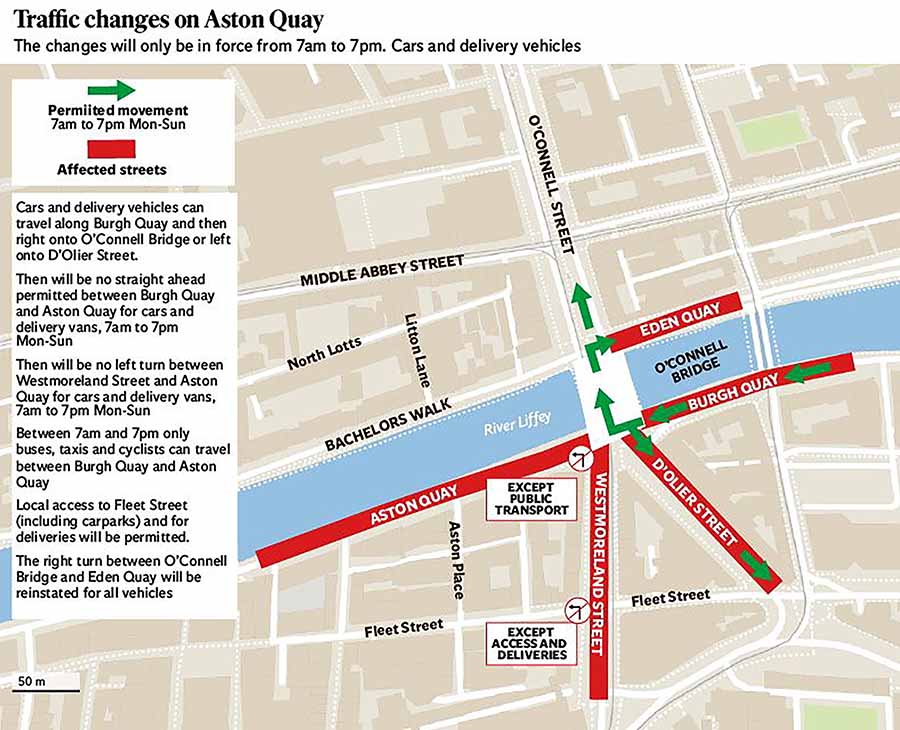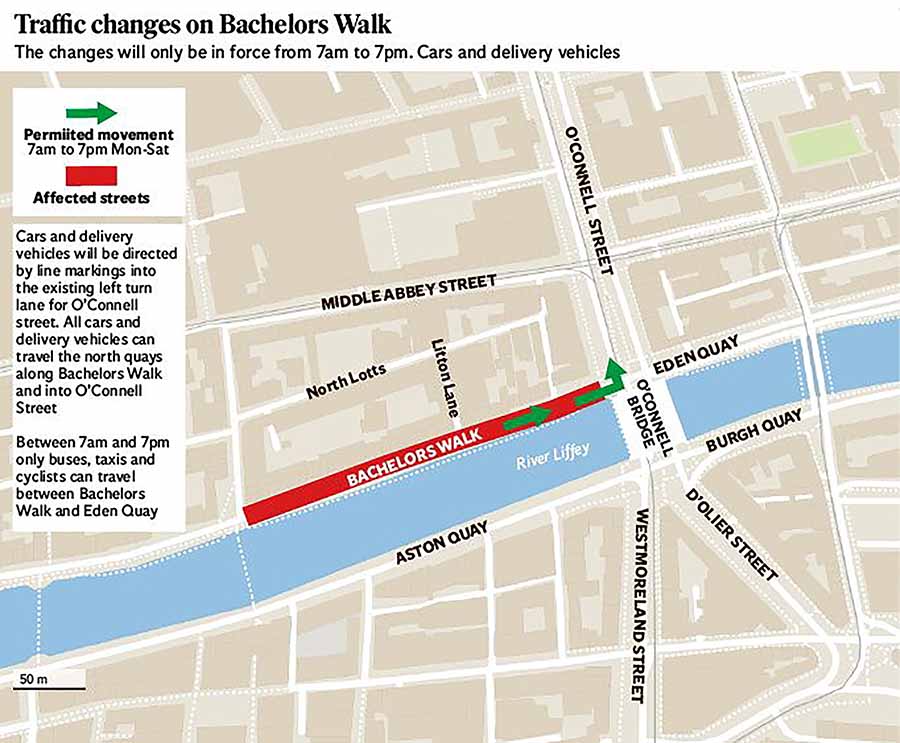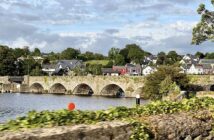
Today sees the most dramatic traffic changes implemented in Dublin city centre since 1982 when traffic flow was reversed on Dublin’s quays.
The changes mainly impact the north and south quays, with new traffic management measures at Bachelors Walk on the north quays and Burgh Quay and Aston Quay on the south quays, including updated road markings and signage while maintaining access to Liffey bridges and existing traffic routes.
Specific restrictions during 7am to 7pm daily will be in place, such as general traffic restricted from proceeding beyond O’Connell Street on Bachelors Walk, with only buses, taxis, and cyclists allowed to continue straight ahead, reflecting the focus on prioritizing sustainable and efficient modes of transportation in the city centre.
The changes are likely to create further congestion in Dublin, already ranked in the top three of the most traffic-congested cities in the world. Data from location technology company TomTom found trips totalling 10km in the capital take 29.5 minutes on average. That is a longer commute time than most cities with much larger populations.
Existing bus stop for tour buses have been removed, but disabled bays, loading bays and taxi spaces on Bachelors Walk will remain unchanged.
- On the south quays, general traffic can travel along Burgh Quay up to O’Connell Bridge, but cannot continue straight on to Aston Quay.
- The straight-ahead movement from Burgh Quay to Aston Quay is for public transport, taxis and cyclists only. Vehicles can still turn left from Burgh Quay to D’Olier Street and right to O’Connell Bridge. The right turn from O’Connell Bridge to Eden Quay is maintained and allow general traffic coming from Burgh Quay to access Eden Quay.
- The left turn from Westmoreland Street to Aston Quay is limited to public transport, taxis and cyclists, while access to Fleet Street is for deliveries and other access needs.
- Disabled bays and loading bays tay in their current locations. Disabled bays on Bachelors Walk, Eden Quay and Aston Quay remain accessible via existing routes. Loading bays on Bachelors Walk, Eden Quay and Aston Quay remain in place with unchanged access routes.
The Dublin City Centre Transport Plan (DCCTP) overseen by Dublin City Council (DCC), was designed to reduce car traffic, promoting public transport, walking, and cycling.
The plan aims to improve the city’s streets, enhance bus services, and encourage sustainable modes of transport like walking, cycling, and public transit, aligning with efforts to create a more pedestrian-friendly and environmentally conscious urban environment.
It stems from studies conducted by the NTA showed almost two out of every three drivers in the city centre, defined as Smithfield to the Custom House, and St Stephen’s Green to Mountjoy Square, do not have the city centre as their destination.
The Dublin City Centre Traders Alliance, comprising entities like Brown Thomas Arnotts and various car park owners, along with groups like DublinTown and Retail Excellence Ireland, have expressed oppose the plan and fear potential negative economic consequences due to the plan’s impact on traffic flow and access to businesses in the city centre.
Dublin Commuter Coalition and Dublin Cycling Campaign have indicated strong support for the transport plan.
Dublin Chamber, with over 1,000 member companies, ultimately backed the council’s plan despite initial uncertainties, recognising the potential long-term advantages of prioritizing sustainable transport modes and creating a more pedestrian-friendly urban environment.
Future plans by the the council include:
- Pedestrianisation on Dawson Street and South William Street, College Green and Dame Street.
- The left turs from Westland Row to Pearse Street will be restricted to public transport and cyclists only, with a new right turn introduced for general traffic.
- Pearse Street will be converted to a two-way street to enhance public transport.
- Gardiner Street will be reconfigured
- Beresford Place will change to two-way traffic.
- Lanes will be reduced on Custom House Quay.
- Traffic will be phased out on College Green and Dame Street, to facilitate deliveries and access.
- Parliament Street will have a car-free corridor introduced similar to Capel Street, with provisions for deliveries and a two-way cycle link.
- Traffic will be removed between Eden Quay and Talbot Memorial Bridge.
- A Custom House plaza space for play, public events and tourism activities will be created.




